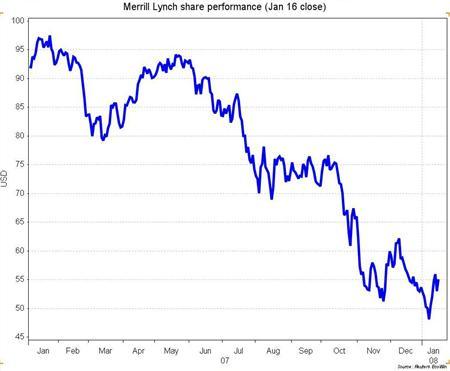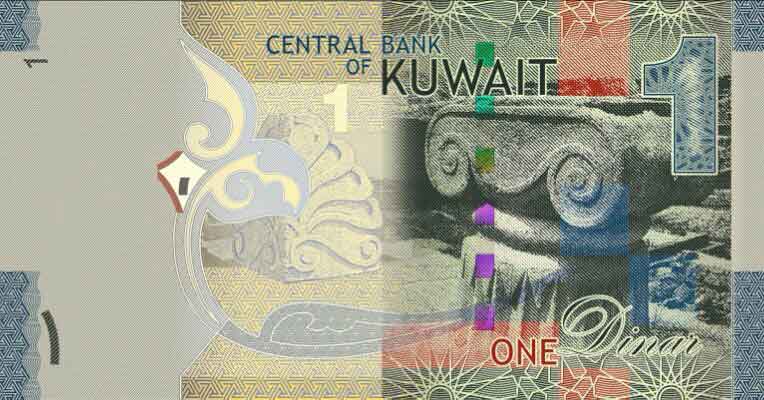Contents:
TQM from traditional quality control in that it involves a comprehensive and systematic approach to improving quality that involves all employees and stakeholders. Every team member works for continuous improvement of processes within the organization. An organization has many departments and several processes running at a time.
Production Equipment Helps Drive Ink Industry's Sustainability Efforts – Ink World Magazine
Production Equipment Helps Drive Ink Industry's Sustainability Efforts.
Posted: Sat, 02 Jan 2021 08:00:00 GMT [source]
Measurable data such as length, size, weight, time,…etc., and countable data such as the number of defects. The third step is to determine who is going to collect that data and when it should be collected. It is a prerequisite for ISO 9000 certification process flow charts are insisting and the organizations are asked to document the processes. It is combination of Six Sigma and Lean Manufacturing concept to reduce errors and increase productivity side by side. 'Lean' and 'Six Sigma' methodologies seem quite different but a company can benefit by wisely uniting these approaches.
Logistics Performance Index: Its Significance & Limitations
In TQM organizations, top management takes personal responsibility for implementing, nurturing, and refining all TQM activities. They make sure people are properly trained, capable, and actively participate in achieving organizational success. Management and employees work together to create an empowered environment where people are valued.
It is a tool for managing projects – planning, scheduling, and execution. A team is formed to gather large amounts of inter-related data (ideas, opinions, issues, etc.) regarding a problem and organize this data into logical groups based on natural relationships. A Pareto Chart/Diagram is a graph where the data are classified in descending order from left to right. The vital few are grouped on the left and the trivial many are grouped on the right. The shape of the histogram can indicate whether the frequency distribution is normal, skewed, peaked, flat, etc. To determine the spread or variation of a set of data points in a graphical form.It is always a desire to produce things that are equal to their design values.
They agree to meet on a regular basis to discuss and solve problems related to work. They operate on the principle that employee participation in decision-making and problem-solving the quality of work. It improves productivity, improve quality and boost employee morale. By using these tools and techniques, companies can identify and eliminate waste, reduce defects, and improve process efficiency, leading to increased customer satisfaction and profitability. In addition to a focus on defects, six sigma seeks to improve all aspects of operations.
tqm tools was first published in 1996 and specifies the actual requirements for an environmental management system. It applies to those environmental aspects which the organization has control and over which it can be expected to have an influence. ISO is often seen as the corner stone standard of the ISO series. However, it is not only the most well known but is the only ISO standard against which it is currently possible to be certified by an external certification authority. Having stated this, it does not itself state specific environmental performance criteria. Introduction In the realm of business and economics, the decision to shut down a company or cease operations temporarily can be a difficult one.
A technique that separates data gathered from a variety of sources so that patterns can be seen (some lists replace “stratification” with or “run chart”). The purpose of the Pareto chart is to prioritize problems No company has enough resources to tackle every problem, so they must prioritize. Therefore, it is always a good idea to use a software check sheet for information gathering and organizing needs. Histogram is used for illustrating the frequency and the extent in the context of two variables.
Gamification Book for Training Leaders !!
It consists of a set of rectangles that represent the frequency of observed values in each category. Check sheets are a systematic way of collecting and recording data. A brainstorming session is required in order to come up with an effective cause and effect diagram. All the main components of a problem area are listed and possible causes from each area is listed. Then, most likely causes of the problems are identified to carry out further analysis.
- Measurable data such as length, size, weight, time,…etc., and countable data such as the number of defects.
- In the checking phase, people confirm the results through before-and-after data comparison.
- The information provided on this website is for educational or information purposes only.
- Organizations that want to stand apart can no longer do so just on their massive product or service portfolio.
- Total Quality Management describes a management approach to long-term success through customer satisfaction and constant improvement.
Check sheet is a metric, structured table or form for collecting data and analyzing them. When the knowledge collected is quantitative in nature, the check sheet can also be called as tally sheet. Ithelps in understanding the progress, defect patterns and even causes for defects. Control chart, Pareto chart, Cause-and-effect diagram, and Process flow chart. The term 'statistical' is a misnomer since some of these tools have nothing to do with statistics. Tools of TQM are an entrenched set of methods that can be done unanimously fine to both process upgrading as well as to the growth of business scheduling.
Chapter: Mechanical : Total Quality Management (TQM) : TQM Tools & Techniques
Achieving sustained quality improvement requires commitment from the entire organization, particularly from top-level management. Total Quality Management tools and techniques have been formatted since last 60 years. These tools and techniques are used to identify the potential problems, frequency of their occurrences and method to control these problems for adopting best class practices. From results of different surveys conducted, it is estimated that more than 100 TQM tools are being used so far. This lesson describes the most commonly used tools under the umbrella of TQM.
What is supply chain management? Mastering logistics end to end – CIO
What is supply chain management? Mastering logistics end to end.
Posted: Tue, 14 Dec 2021 18:55:43 GMT [source]
Total Quality Management is a management approach that emphasizes continuous improvement, customer satisfaction, and employee involvement to achieve business excellence. TQM involves a systematic and comprehensive approach to improving quality that involves all employees and stakeholders. By embracing TQM and focusing on quality, businesses can gain a competitive advantage and achieve success in today's highly competitive marketplace. To implement 'Total Quality Management', all the team members should be given proper trainings and empowerment to take decisions. It is not an overnight process but when applied, it is capable to transform the organization by continuously improving its processes.
'Waste' refers useful especially to excess input materials and processing steps. The goal of 'eliminating waste' may also be stated as providing exactly what the customer values for the lowest cost of production. The word 'Lean' implies 'cutting the fat' or 'trimming waste', where 'fat' or 'waste' refer to whatever is not valued by the customer. So another way of expressing the 'Lean Manufacturing' goal is to only use materials and processes that add value for the customer. One of the more difficult challenges in six sigma is the selection of the most appropriate problems to attack. As Indian companies look to differentiate themselves from the competition, TQM comes in extremely effective to achieve sustainable competitive advantage.
At the outset of a six sigma initiative, it is beneficial to pick the “low-hanging fruit” – projects that are easy to accomplish in order to show early successes. This visible success helps to build momentum and support for future projects. These activities along with their durations are shown in the network diagram below. The manner of drawing the diagram, computing the project duration, and determining the critical path are explained in the class. The diagram permits the team to generate a large number of ideas through brainstorming and then group them logically for better understanding and arriving at solutions. The objective is to allow free flow of ideas, opinions and facts without causing any interruption.
Toyota Production System Vision & Philosophy Company Toyota … –
Toyota Production System Vision & Philosophy Company Toyota ….
Posted: Wed, 27 Mar 2019 05:07:22 GMT [source]
The designation arose in post-war Japan, inspired by the seven famous weapons of Benkei. The numbers achieved by the best-in-class benchmark are the target. Second, benchmarking managers to understand why their performance requires from the best-in-class. An understanding of the differences allows managers to organize their improvement efforts to meet the goal.
The difference between a 4- and 6-sigma quality level can be surprising. A change from 3 to 4 sigma represents a 10-fold improvement; from 4 to 5 sigma, a 30-fold improvement; and from 5 to 6 sigma, a 70-fold improvement – difficult challenges for any organization. The foremost answer to all challenging situations is to cross check management systems and organizational behavior of a company. With proper identification of inaccuracy there, immediate refinement plans need to be implemented, such dedication is the necessity of a managerially exigent situation. The driving force personnel building responsiveness to changes, promoting participation of stakeholders and empowered personnel.
Challenges of Implementing Total Quality Management
The company saved $2 billion in 4 years as a result of these efforts. The appropriate level should depend on the strategic importance of the process and the cost of improvement relative to the benefit. It is generally easy to move from a 2 or 3-sigma level to a 4-sigma level, but moving beyond that requires much more effort and sophisticated statistical tools. Aim of the statistical based process control is to produce products and services with quality consistency. Also known as Shewhart charts or process-behavior charts, is a statistical process control tool used to determine if a manufacturing or business process is in a state of statistical control.
In 1990, Motorola joined with IBM, Texas Instruments and Kodak to establish Six Sigma Research Institute . It developed the concept of Black Belt – a person trained to facilitate the carrying out of six sigma projects. Project, and determine the critical path which includes activities critical to the timely completion of the project.
This is one of the basic quality tool that can be used for analyzing a sequence of events. They are a means of funding government services and programs that benefit citizens. INTRODUCTION A cash book is a financial ledger that records all the transactions involving cash inflow and outflow in a business. Cash credit is a financial product offered by banks to businesses that need working capital to meet their day-to-day operational expenses. Any organization, regardless of size or industry, can benefit from implementing TQM. Introduction In the world of finance and accounting, businesses often face the challenge of maintaining and replacing their long-term assets….
Processes ensure that needful steps have been taken to obtain the quality. Therefore, adhere to the processes is very crucial for quality control and quality assurance. Total Quality Management tools such as 'process flow charts' may be employed to define clear roles and responsibilities so that everyone in the team knows who does what at a particular time. In 1976, the Union of Japanese Scientists and Engineers understood the necessity for tools to market innovation, communicate information and successfully plan major projects.
It is used to identify/analyze/rate the relationship among two or more variables. Data are presented in table form along with symbols and with or without numerical values. The Quality Function Deployment /House of Quality is an example of a Matrix Diagram. The x-axis shows the item classification while the y-axis shows the numbers or percentages of occurrence.
- In today's fast-paced and highly competitive business world, companies need to focus on delivering high-quality products and services to stay ahead of the competition.
- Therefore, use of such tools should be a basic practice in the organization in order to enhance the efficiency.
- The word 'Lean' implies 'cutting the fat' or 'trimming waste', where 'fat' or 'waste' refer to whatever is not valued by the customer.
- A variation of the Pareto Chart shows cumulative percentages on the y-axis.
- Total Quality Management is a management approach that aims to improve the quality of products and services by involving all employees in the process of continuous improvement.
- However, an organization that is committed to high quality has “consistency to a standard” as its primary objective, complemented by “continuous improvement”.
Or one can say that only the top management is committed towards achieving quality. But 'Total Quality Management' approach is different wrt this ideology. It states that every employee of the organization is responsible for the quality and should be a committee towards achieving this.
The cause-and-effect diagram is a method for analyzing process dispersion. It helps organize and relate factors and for providing a sequential view. It can become very complex and can be difficult to identify or demonstrate interrelationships. Quality management, therefore, starts with a definition of the standards that have to be followed, along with a mechanism for compliance to these standards. The standards may be officially published by an industry organization, regulatory requirements for a certain kind of product, specifications by a purchaser, or self-imposed standards of the producer. Most likely, producers and service organizations will seek to comply with a combination of all these standards.
It is useful in reducing any broad objective into increasing levels of detail in order to formulate action plans. In summary, it consists of objectives, means, and how to achieve the means. It is usually drawn after an affinity diagram has been finalized. It is a picture made up of lines and symbols designed to show the relationship between an effect and its causes. It was developed by Dr. Ishikawa in 1943 and therefore is also known as Ishikawa diagram. Since the diagram looks like the skeleton of a fish, it is also called Fishbone diagram.
The benefits of the quality management practice are adequately documented in India and the rest of the world. Several companies tweaked and implemented it according to their requirements. It effectively involves everyone from top management to the shop floor workers to actively participate as a team. The best tools for this purpose is check sheet, Pareto chart, histogram, scatter diagram, run chart and statistical process control . There is no recipe for organization success, however, there are a number of great TQM models that organizations can use.



